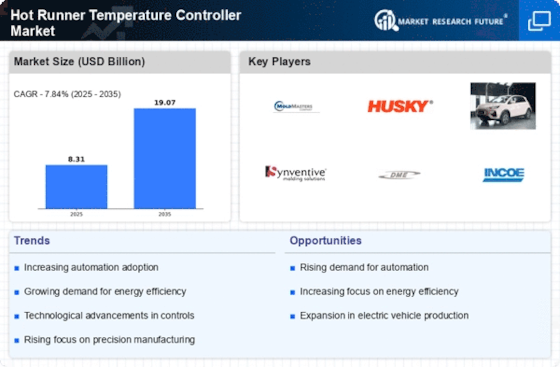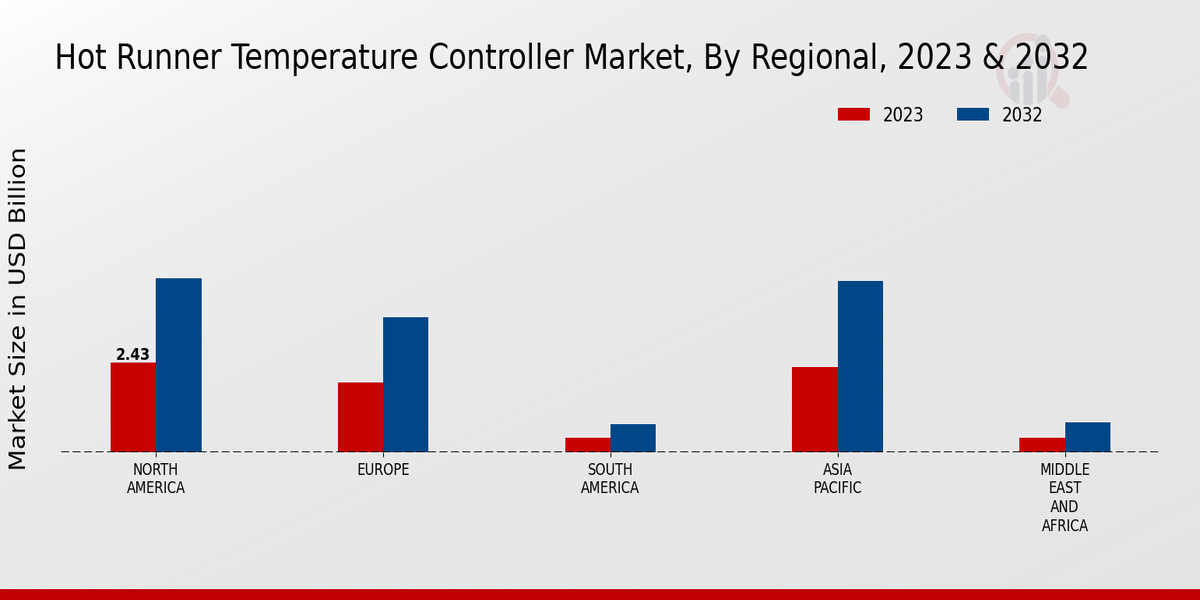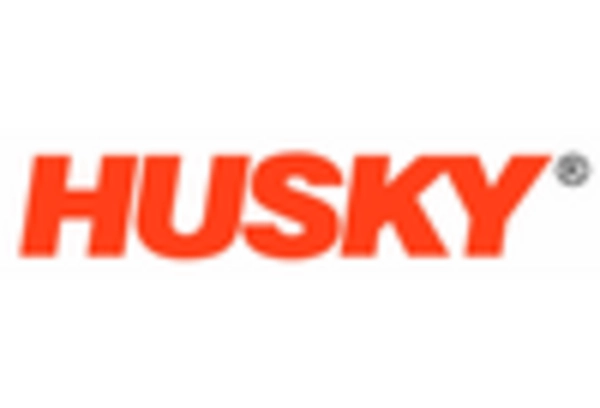Focus on Reducing Production Costs
In the Hot Runner Temperature Controller Market, there is a growing emphasis on reducing production costs while maintaining high-quality output. Hot runner systems are known for their ability to minimize material waste and enhance cycle times, which can lead to significant cost savings. As manufacturers seek to optimize their operations, the integration of efficient temperature controllers becomes essential. Market analysis suggests that companies implementing these systems can achieve up to 30% reduction in material costs. This focus on cost efficiency is likely to propel the demand for innovative hot runner temperature controllers, as businesses strive to remain competitive in a challenging economic landscape.
Increasing Environmental Regulations
The Hot Runner Temperature Controller Market is influenced by the tightening of environmental regulations aimed at reducing carbon emissions and promoting sustainable practices. Manufacturers are under pressure to adopt technologies that not only comply with these regulations but also enhance energy efficiency. Hot runner temperature controllers play a crucial role in this transition by optimizing energy consumption during the production process. It is estimated that implementing energy-efficient temperature control systems can lead to a reduction of up to 20% in energy usage. As regulatory frameworks continue to evolve, the demand for compliant and efficient hot runner temperature controllers is expected to grow.
Growing Demand for High-Quality Plastic Products
The Hot Runner Temperature Controller Market is closely linked to the rising demand for high-quality plastic products across various sectors, including automotive, consumer goods, and packaging. As industries strive to meet consumer expectations for quality and durability, the need for precise temperature control in the molding process becomes paramount. Reports suggest that the plastic injection molding market is expected to reach a valuation of over USD 300 billion by 2026. This surge in demand for quality plastic products is likely to drive the adoption of advanced hot runner temperature controllers, which are essential for achieving the desired product specifications and minimizing defects.
Technological Advancements in Temperature Control
Technological advancements are significantly shaping the Hot Runner Temperature Controller Market. Innovations such as IoT integration and real-time monitoring capabilities are enhancing the functionality of temperature controllers. These advancements allow for better data collection and analysis, leading to improved decision-making in manufacturing processes. The market for smart temperature control solutions is anticipated to expand, with projections indicating a growth rate of around 5% annually. As manufacturers increasingly recognize the benefits of these technologies, the demand for advanced hot runner temperature controllers is likely to rise, facilitating more efficient and responsive production environments.
Rising Adoption of Advanced Manufacturing Techniques
The Hot Runner Temperature Controller Market is experiencing a notable shift towards advanced manufacturing techniques, such as injection molding and 3D printing. These methods require precise temperature control to ensure product quality and consistency. As manufacturers increasingly adopt these technologies, the demand for sophisticated hot runner temperature controllers is likely to rise. Reports indicate that the market for injection molding is projected to grow at a compound annual growth rate of approximately 4.5% over the next few years. This growth is expected to drive the need for advanced temperature control solutions, thereby enhancing the overall efficiency and effectiveness of production processes.


















Leave a Comment